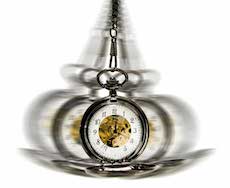Editor's Eye: Moving at the Speed of Culture.
05, 08 14

Is there a movie scene you’ve never forgotten that still fills your spirit like a glass of fine wine? Doesn’t it feel like it’s a part of who you are? Do you remember the rhythmical feel of the scene?
The most fascinating aspect of filmmaking I have witnessed is the ability of film editing to adjust to the movements of culture. As we think and connect faster, editing has gotten faster, with far less need for “classical” continuity and rhythm. In a lightning storm of activity, we can jump from thought to thought and make complex connections without spelling them out as we once felt necessary.
HOWEVER, our culture has also had adverse reactions to all this speed, so we’re also attuned to the need to slow down in order to sense and appreciate the subtler movements of elements in our storytelling. Avant-garde editors of yesteryear were tuned into faster thinking and perception, but most of the filmgoing culture wasn’t ready to take in their work.
The filmgoing "mind" is a lot more versatile now. Film has had a profound ability to slowly (and sometimes quickly) change our culture by “training” us to take in stories in novel ways. We can often spare familiar details while creating more intricate connections between plot points and characters. We have been taught ways to perceive by movies.
If you haven’t seen A Great Beauty (La Grande Belleza) yet, I recommend it. It starts off with a slow deep tempo. Soon, it takes off like a race-horse and then finds its way back to the quiet. It moves through a wide range of speeds with a rarely seen finesse. It traces the path of youthful ambition into the transformative wreckage of midlife. Forget the erudite lecture on rhythm — watching this film is an object lesson in rhythmical genius.
“The trees that are slow to grow bear the best fruit.”
— Molière
Film editors today can work with a far more dynamic range of rhythms than their predecessors and still connect with the wider culture. What hasn’t changed is the importance of editing sensitivity: knowing when it’s time to slow down the cutting and storytelling rhythm. Cutting fast can become compulsive, like gambling or eating potato chips. This becomes a poor substitute for beauty and depth. It takes a certain discipline to decelerate things so the story can reach the part of our psyche that takes in the longer view and appreciates the moment with a wondrous impression, one that may well last for years.
by Eric Pomert signup
Comments
How to Cast a Spell
13, 05 14

This question recently came my way: How does a film editor contribute to storytelling?
Effective film editors are highly attuned to rhythm. Rhythm runs through everything you see in a film: frame composition, shot duration, scene duration, dialogue, music, sound effects, and graphic effects, to list the main ones. The technical aspects of knowing the software are secondary, the way knowing how to type simply serves a short story writer. The editor uses his or her instincts to coordinate these rhythms into a story that brings viewers firmly into a state of belief. When a scene drags, or a cut is just awkward, that belief can be destroyed.
You might say editors are audio-visual hypnotists with a talent to keep you spellbound in wonder.
by Eric Pomert signup
How to Break into Film Editing? — Send a Telegram.
18, 10 13
How to break into film editing when you don’t know any better. Read More...
Editing Analysis: Triumph of the Unusable
23, 05 13
When what goes wrong goes right in filmmaking. Read More...
The Intimacy of Open Space
07, 04 13
Discovering the closeness achieved by framing far away. Read More...
